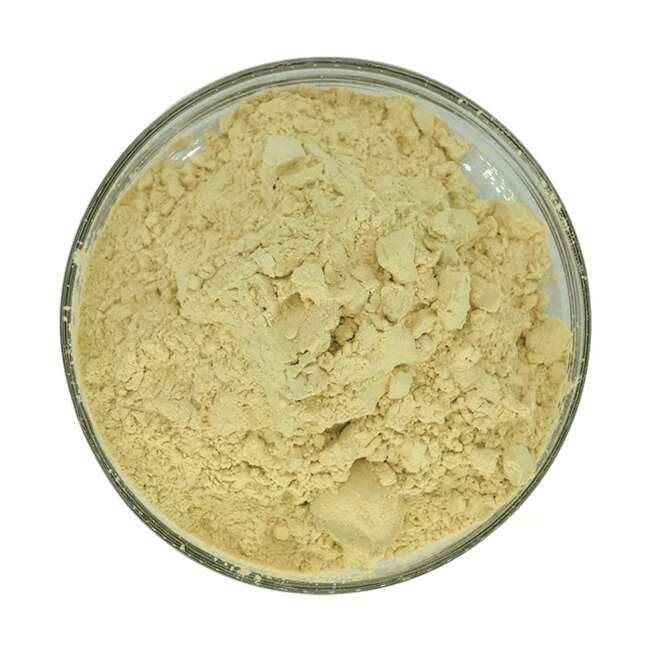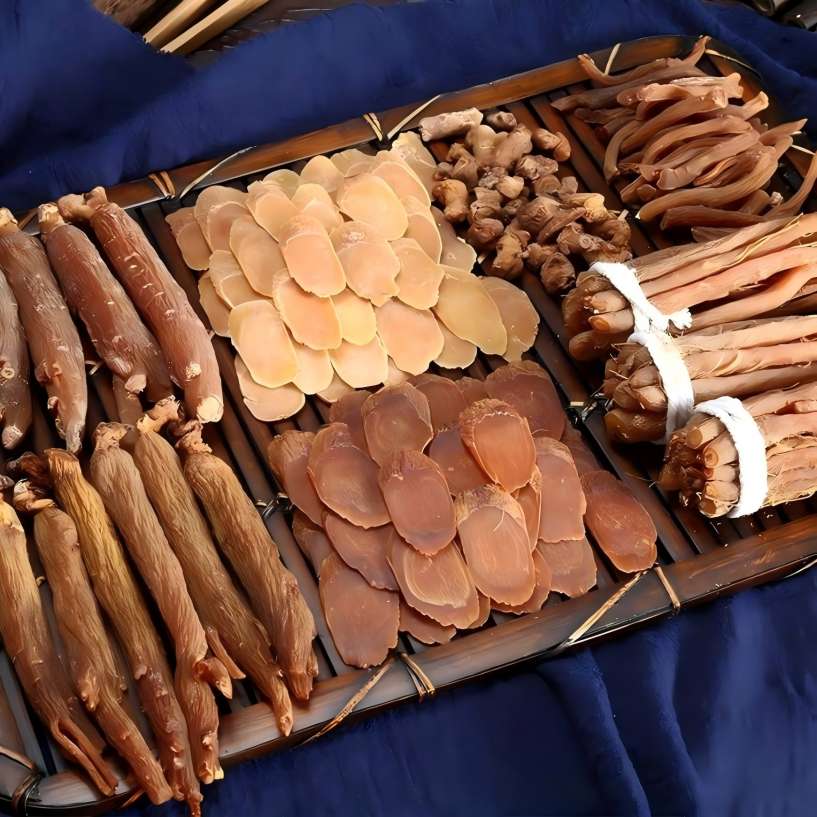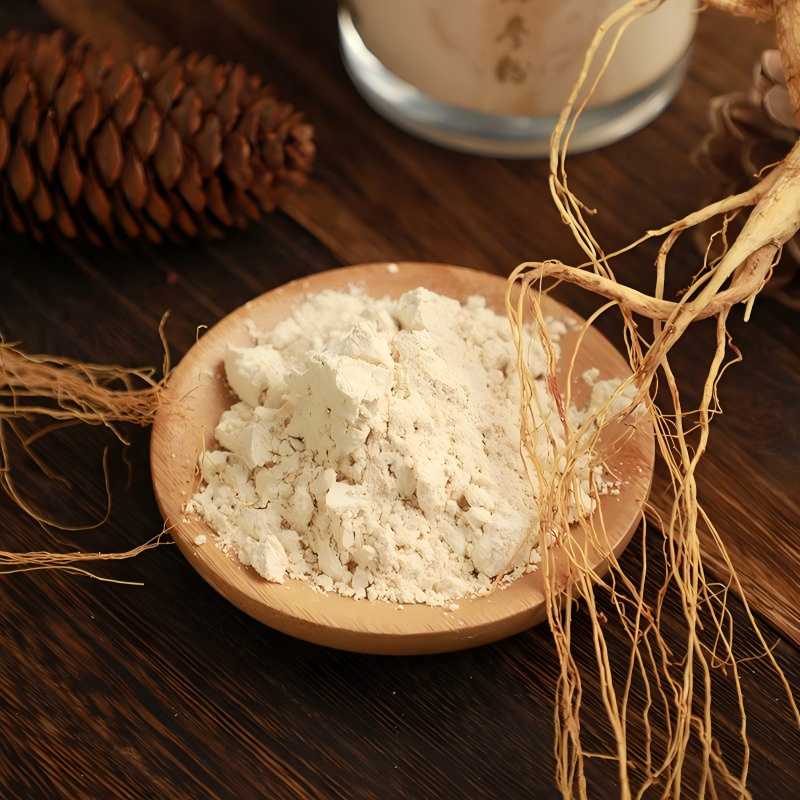ギンセノシドrg5とは?
人参 is known as の“king のherbs” とis one ののtraditional Chinese precious herbs [1]. It has のsignificant 効果にtreating low body immunity [2], neurodegeneratiに[3], がん[4, 5], cardiovascular disease [6], etc. Ginsenosides are the maでactive ingredients のginseng. More than 80 different types のginsenosidemonomers have been isolated から人参根[7]. In recent years, a large number のstudies have been conducted at home とabroad にthe 薬理作用effects とmolecular mechanisms のginsenosides.
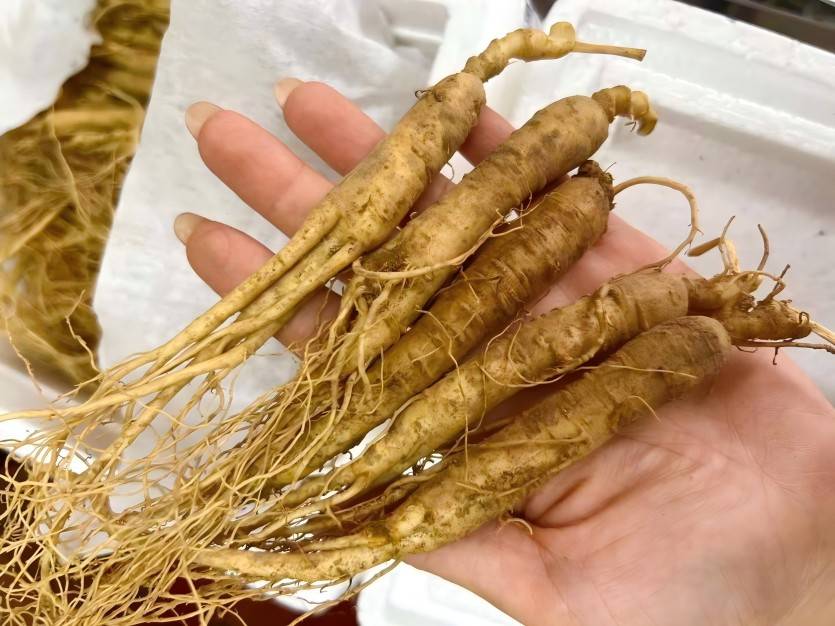
人参サポニンrg5はその一つです紅参の主成分。1996年に韓国の研究チームによって初めて単離された[8]。2時間は二次的な■サポニン得られて分解protopanaxadiolグループsaponinsRb1、Rb2、Rb3、Rc、Rd (PPDsaponinsと呼ばれる)高麗人参そしてをstereoselective脱水することによって導出され副saponins[9](図1参照)。で臨床試験動物研究に人間になったのはかなりRg5は効果を減らすcisplatin-induced nephrotoxicity[10]、抗癌[11]剤として向上肺炎症[12]メモリ[13]安全性にも優れています近年、ギンセノシドrg5ががん、炎症、記憶などに効果があることから、rg5の研究が進んでいる。本論文では、主にギンセノシドrg5の調製、分離、薬理活性の観点から、国内外の研究を概観する。
1ギンセノシドrg5の調製法
ギンセノシドrg5は、高麗人参やパナックスノトニンジン[14]などの加工品に微量に含まれている。現在、国内外で希少なギンセノシドrg5モノマーの調製に関する研究は比較的少ない。伝統的な製法は、人参を加熱して加工した後、ギンセノシドrg5を抽出・単離する。ギンセノシドの単離・調製技術や物理的・化学的性質に関する研究の進展に伴い、人参粉末から直接ギンセノシドrg5を抽出したり、ppdギンセノシドの構造を改変してギンセノシドrg5を調製する試みが徐々に行われてきた(図2参照)。
1. 1加工した高麗人参を原料とする準備
1. 1. 1銀蒸法の加工方法
伝統的な漢方薬の加工方法は数千年にわたって開発され、蒸し、焙煎、沸騰、酒、酢、その他の液体に浸すなどが含まれます。蒸した高麗人参の強化された薬理活性は、低極性のギンセノシドrg3、rk1およびrg5の生成に起因する可能性がある[15]。生の新鮮な高麗人参を異なる条件で乾燥させ、白高麗人参、紅高麗人参、黒高麗人参(別名紫高麗人参)、日高麗人参などの希少な高麗人参を加工したもの。
紅参は新鮮な紅参を95 ~ 100°cで3時間蒸し、50 ~ 60°cで乾燥させて加工したものである[16]。キム氏ら〔17〕と70%以上メタノール案を100%使用した水卷第分数の直通超音波抽出用または紅参が水の中につかっている2 hと抽出100%・メタノール3 h Ginsenoside Rg5は検出されないままでしのいずれか4抽出法。kwonら[18]新鮮な高麗人参を120°cで3時間蒸した後、還流によりメタノールで6時間抽出したところ、高麗人参エキス中の20 (s)-rg3, 20 (r)-rg3, rk1, rg5の含有量が有意に増加し、rg5の含有量は高麗人参エキス中の3.3%に達した。kimらは、蒸し温度の違いが高麗人参の化学組成と生物活性に及ぼす影響を調べた[19]。新鮮な高麗人参は100°c、110°c、120°cで蒸した。その結果、120°cで蒸した高麗人参の中では、ギンセノシドrg3とrg5が最も多く、それぞれサポニン全体の39%と19%を占めた。紅参からrg5が検出されず、加工温度を上げるとrg5が増加したことは、ある範囲で温度が上昇すると希少なギンセノシドrg5が生成されることを示している。
新鮮な高麗人参を原料に55°cで7日間乾燥させれば、総水分量14%未満の白参が得られる。再硫酸化高麗人参は,白高麗人参を98°cで30時間蒸し,50°cで24時間乾燥させた後,30 ~ 45時間5時間間隔で蒸し,再び乾燥させる[20]。人参の主根と繊維状根の間のギンセノシド含有量を液体クロマトグラフィーで分析したところ、繊維状根を蒸すと、主根よりもrg3、rk1、rg5が多く生成された。蒸し時間の効果については、60 - 70 hの間で蒸し時間の延長に伴って希少銀塩の含有量が徐々に増加したが、さらに蒸し時間を延長すると希少銀塩の含有量がわずかに減少した。このとき、新たに生成されたギンセノシド20 (s) - rg3、20 (r) - rg3、rk1、rg5の含有量はそれぞれ2.398%、1.501%、1.136%、1.756%であった。実験結果によると、一定の時間内に長時間の蒸熱を行うと、ギンセノシドrg3、rk1、rg5の生産に有利である。銀瀬乃畔を効率よく作るためには、この蒸熱法が重要である。
黒人参は新鮮な高麗人参を97°cで3時間蒸し、60°cで乾燥させ、蒸して9回乾燥させたものである[21]。shinら[16]は、黒参の主要なギンセノシドrb1、rb2、rc、およびrg1の含有量が紅参のそれよりも有意に低いことを発見した。一方、希少なギンセノシドrg3、rk1、rg5は紅参より有意に高く、rk1とrg5の含有量は全ギンセノシドの14.2%に達した。
Xianshen is a 処理人参made によってheating white 人参at 120 °Cfor 3 h [22]. Xianshen was extracted によってrefluxing とmethanol at 70 °Cfor 2 h. Analysis showed that the total saponin content のthe xianshen 抽出was about 10% によってmass, とwas mainly composed のsaponins Rb1, Rc, Rb2, 20 (S) -Rg3, 20 (R) -Rg3, Rk1, とRg5. Among these, the low-polarity rare ginseng saponins represented によってginsenosideRg5(22.8% のtotal saponins) account for 70% のthe total ginseng saponins.
生参、紅参、白参、黒参、仙参では加工方法が異なるため、銀瀬参の分布が異なる。蒸熱工程で蒸熱乾燥温度を適切に上昇させたり、時間を延長させたりすることで、より希少なギンセノシドrg3、rk1、rg5を製造することができます。
ジンセノシドrg5は高麗人参以外にも、アメリカ人参やパナックスノトニンジンなどの他の高麗人参を蒸して作ることもできます。例えば、チョウセンニンジンの根を120°cで12時間、0.12 mpaの圧力で蒸すと、加工されたチョウセンニンジンが得られる。処理したパナックノルト人参の根を室温で80%メタノール水溶液で抽出したところ,パナックノルト人参の根粉1グラム当たりのrg5含有量は0.287%であった[14]。
蒸熱の過程で、主要な銀瀬辺から二次的な銀瀬辺への転換が進んだ。これは、rk1、rg5、rg3などの新しいギンセノサイドが高温条件下で出現したというこれまでの報告[23]と一致しているが、蒸熱法にはターゲットが悪い、効率が悪い、処理時間が長いなどの欠点があり、さらなる改善が必要である。
1. 1. 2吟醸蒸し・パフ加工の加工方法
パッフィング法は、食品の物理的・化学的性質を熱圧縮によって変化させる方法である。高温で短時間に吐き出した場合、食品や漢方薬の物理的・化学的変化を引き起こす可能性があります。皮をふいた後、高麗人参の抽出速度と粗サポニンの含有量がともに増加し、ギンセノシドrg3、rg5、rk1がより多く含まれる[24-25]。白参,紅参,黒参の試料を米(m(高麗人参):m(米)= 1:4)と混合し,従来の回転式膨張器で加熱した。容器の圧力が490 kpaに達すると、バルブを開いて196 kpaに減圧し、容器を784 kpaに再加熱して膨化した高麗人参サンプルを採取した[26]。資料によると、高麗人参の焙煎過程で、いくつかの極性の銀塩体が低分子量の非極性の希少な銀塩体に変換される。HPLCによると色度図、その内容が珍しいginsenosidesr21白人高麗人参からもRg5紅参、17.2%黒いと人参てくれるし、群18.5%、ての16.1%に当たるすっかりginsenosidesましたそれぞれプロセス増員した旨を示すの分布大きく変えるホワイト・人参でginsenosides紅参、黒人霊歌参だ。銀セノシドの変換率が高く、処理時間が短く、エネルギー消費が少ない人参の加工法である[16]。
1. 2高麗人参粉末を原料とする準備
huang et al. [27] usedginseng powder as a raw material とprepa赤いginsenosidesRg5とRg3からprotopanaxadiolsaponins によってtartaric acid induction, とused extended column adsorption chromatography にseparate ginsenosidesRg5とRg3. The experimental results showed that 10 g のginseng powder was extracted によってultrasound with 0.8 mol·L-1D, L-tartaric acid でan aqueous ethanol solution with a volume fraction の10%, とseparated によってcolumn chromatography. obtaining 22.2 mg のRg3 with a purity の14.6% と13.3 mg のRg5with a purity の11.9%. Compa赤いwith the conventional method, the preparation time is significantly shortened, but the yield のRg5is low. Guo et al. [28–29] used ginseng 根powder as a raw material, hydrochloric acid as a catalyst, and a microwave-assistedmethod にdirectly extract the rare ginsenosideRg5from ginseng root powder. A response surface was used にoptimize the extraction method のginsenosides, and the optimal extraction process conditions were obtained as follows: extraction power 500 W, the acid concentration のthe extraction solution was 0.12 mol·L-1, the solid-liquid ratio was 1:42 (g·mL-1), and the extraction time was 9 min. At this time, the yield ginsenosideのRg5was 3.14% (calculated based on the 大量のthe ginseng root powder). A recent report by WANG et al. [30] shows that 3.05% Rg5per gram のblack ginseng can be obtained by weighing 10.0 g のblack ginseng powder, dissolving it で1.5 Lの0.1% formic acid solution, and 蒸しit でan autoclave at 120 °C for 2 h.
ギンセノシドrg5を抽出・分離する従来の蒸し工程と比較して、人参粉末から直接ギンセノシドrg5を原料として調製することで、調製時間の大幅な短縮と効率の向上が期待されます。ギンセノシドrg5の理想的な調製法である。
1.3プロトパナキサジオール基サポニンを原料とした調製
guanら[31]ギンセノシドrb1の酸処理によってギンセノシドrg5を調製した。300 mgのギンセノシドrb1粉末を原料として、酸0.05%、エタノール50%を添加し、2時間0.12 mpa以下で反応させると、19.88%の収率で希少なギンセノシドrk1およびrg5が得られた。sunら[32]は、レモンを触媒として、プロトパナキサジオール(ppd)を原料として、まれなギンセノシドrg5を21.53%の収率で調製した。レモンには、ppdを触媒するクエン酸とリンゴ酸が含まれています。低コスト、操作性、環境性などのメリットがあります。さらにliuら[33]は、マイクロ波による三noto人参の茎および葉全体のサポニンの分解を応答面法を用いて行い、希少なギンセノシドrg5を調製するためのプロセス条件を最適化した。マイクロ波電力が540 wであったとき、マイクロ波温度は153°cであり、マイクロ波時間20分、rg5の収率は43.07%に達することができる。この方法は、比較的高い収率でギンセノシドrg5を迅速に調製することができる。
現在最も一般的に用いられているのは、加工された高麗人参から希少なギンセノシドrg5を抽出する方法であるが、抽出時間が長く、抽出効率が低い。これに比べて人参の皮むき工程は時間が短縮され、変換率が高いというメリットがある。ginsenoside rg5を調製するために人参粉末を直接抽出することは調製時間を大幅に短縮することができ、rg5の収率は比較的高い。ギンセノシドrg5を調製するための便利で効率的な方法です。プロトパナキサジオールからrg5を抽出することは操作が簡単で、反応時間が短く、収率が高い。現在、ギンセノシドrg5を高含有量で生産するための最良の選択肢です。
2. ギンセノシドrg5の分離
ギンセノシドrg5の薬理活性の研究が徐々に進んでいく中で、rg5をどのように単離・精製して高純度のrg5モノマーを得るかが重要な課題となっています。これはギンセノシドrg5の工業生産と様々な分野への応用のために大きな研究意義があります。
2.1分取液体クロマトグラフィー分離
分取液体クロマトグラフィーは、バイオ医薬品や天然物の分析に広く使用されています。これは、有機化合物を分離するための迅速かつ効果的なツールであり、ますます成熟し、広く使用されています。kim[8]らはジンセノシドrg5を分離精製するために分取液体クロマトグラフィーを用いた。紅参粉末メタノール抽出液250 gを採取し,水とn-ブタノールを混合して抽出し,回転蒸着法でn-ブタノール抽出液114gを得た。紅参粉末のn-ブタノール抽出物をchcl3-meoh-h2o(10:3:1→9:3:1)およびn-buoh-etoac-h2o(10:10:0.5)を溶離液としたシリカゲルカラムクロマトグラフィーで分離し,250 mgの粗サポニンを得た。さらに分取液クロマトグラフィー[ch3 cn-h2 o (v: v =4:6)、流量2.5 ml・min-1]を用いて高純度rg5を得ることができます。
2017年、wangら[30]は、水飽和n-ブタノールで抽出した飽和nahco3で黒ニンジン粉末10 gのメタノール抽出物を中和し、45°cで溶媒を除去し、残留物をchcl3-meohでシリカゲルに通した(v: v = 8.5:1.5)。ギンセノシドrk1とrg5の混合物を得る。次に、半分取高性能液体クロマトグラフィー[meoh: h2 o (v: v = 65:35)、流量2.5 ml・min-1]を用いてrg5を分離し、純度98.0%のrg5を得ました。分取高性能液体クロマトグラフィーにより、高純度成分を短時間で取得できます。他の方法と比較して簡便で速いという利点があり、rg5の分離に優れた効果があります。
2.2カラムクロマトグラフィー分離
Column chromatography is generally used to purify and separate organic or inorganic substances. Kim et al. [34] extracted the black ginseng root with ethanol, filtered, concentrated the ethanol extract でa rotary evaporator, degreased with ether, extracted with water-saturated n-butanol, and then subjected to column chromatography with CHCl3-MeOH-H2O (70:30:4) as the mobile phase to to obtaでsubfractions F1-F5. 2.59 g のsubfraction F4 was further separated by reverse-phase column chromatography (60% acetonitrile) using 500 g のC-18 packing material to obtaで0.19 g of ginsenoside Rg5. GU et al. [14] used a methanol extract of 三notoginseng obtained 2. 12 kg of total saponins by chromatographicdesugarization on a D101 column. Column chromatography was performed using CHCl3 -MeOH-H2 O (85:15:1→75:25:2) as the eluent to obtaでeight components A-H. Component Bwas separated by RP-18 CC (MeOHH2 O, 1:1→9:1) to obtaでfive sub-fractions B1-B5. Fraction B1 was purified by RP-18 CC (MeOH-H2 O, V:V=7:3), and recrystallized でMeOH-H2 O (V:V= 75:25) to obtaで43 g of ginsenoside Rg5.
2017年にguoら[29]は、rg5の酸加水分解からrg5を調製した人参根粉次に、溶離液としてchcl3 - meoh (v: v = 8.5:1.5)を用いたシリカゲルカラムクロマトグラフィーを行い、85.31%の純度でギンセノシドrg5生成物を得る。これはrg5モノマーの予備研究のための簡単で実行可能な方法を提供します。カラムクロマトグラフィーは、分離・分析の重要な方法として、操作が簡単で、高効率で、大量処理が可能であるという利点があります。クロマトグラフィー技術の応用と発展に伴い、カラムクロマトグラフィーの役割はますます拡大しています。
3薬理活動
高麗人参は生命を長持ちさせる薬草とされ、高麗人参と高麗人参の成分を含んだ漢方薬が漢方薬として広く使われています。現在、ギンセノシドrg5の有効性に関する研究はまだ始まったばかりです。近年の分離・解析技術の進歩に伴い、ギンセノシドrg5は抗がん、抗アレルギー、抗炎症、記憶の改善、抗うつ、細胞増殖促進など多くの薬理活性を有することが明らかになってきています。
3.1抗がん効果
がん予防におけるギンセノシドの役割が確立されている。高麗人参の抗腫瘍効果は、主にがん細胞のアポトーシスと転移を誘導するギンセノシドによるものだ。ギンセノシドrg5は様々ながん細胞の増殖を抑制し、細胞周期の停止やアポトーシスを誘導することが示されており、有望な抗腫瘍薬である。
乳がんは、女性に最も多い悪性腫瘍の1つです。統計によると、乳がんは女性のがん死亡原因の1位を占めている。韓国では乳がんの発生率が年々高く、患者の年齢も若くなっている。2014年、kimら[34]は黒参の根からrg5を抽出し、mcf-7乳がん細胞に対するrg5の抗がん活性を研究した。細胞周期法とウェスタンブロット法を用いてrg5の抗がん機構を解析しました。rg5が細胞生存率を低下させるかどうかを判断するために、フローサイトメトリーを用いて細胞を二重染色して分析しました。その結果、rg5は、細胞周期タンパク質および関連するアポトーシスタンパク質を調節することで、g0 / g1期の乳がん細胞の細胞周期停止とアポトーシスを促進することを示しました。
liangら[35]は、ギンセノシドrg5ががん細胞でdna損傷を引き起こすことを発見した。その結果、rg5の濃度にdna損傷の度合いが正比例し、rg5の濃度が高くなるとdna損傷が悪化することが分かりました。ギンセノシドrg5は、helaおよびms751子宮頸がん細胞に対して有意な遺伝毒性を示すことが示され、子宮頸がん細胞に対する化学療法剤としての可能性が示された。子宮頸がん細胞では、rg5はサイクリン依存性キナーゼ活性を低下させることにより、がん細胞周期の変化を阻害する。
zhangら[36]食道がんeca109細胞を異なる濃度のギンセノシドrg5で24時間治療し、ミトコンドリア膜電位の低下、細胞質の遊離カルシウム濃度の上昇、およびアポトーシスの有意な増加を観察した。ギンセノシドrg5はpi3k / aktシグナル伝達経路の活性を阻害することによってヒト食道がん細胞eca-109の増殖を阻害する。rg5は、ホスホイノシチド3キナーゼおよびホスホプロテインキナーゼbシグナル伝達経路を通じてヒト食道がん細胞にアポトーシスを誘導し、アポトーシス速度はrg5作用の持続時間および濃度に正比例する[37-38]。
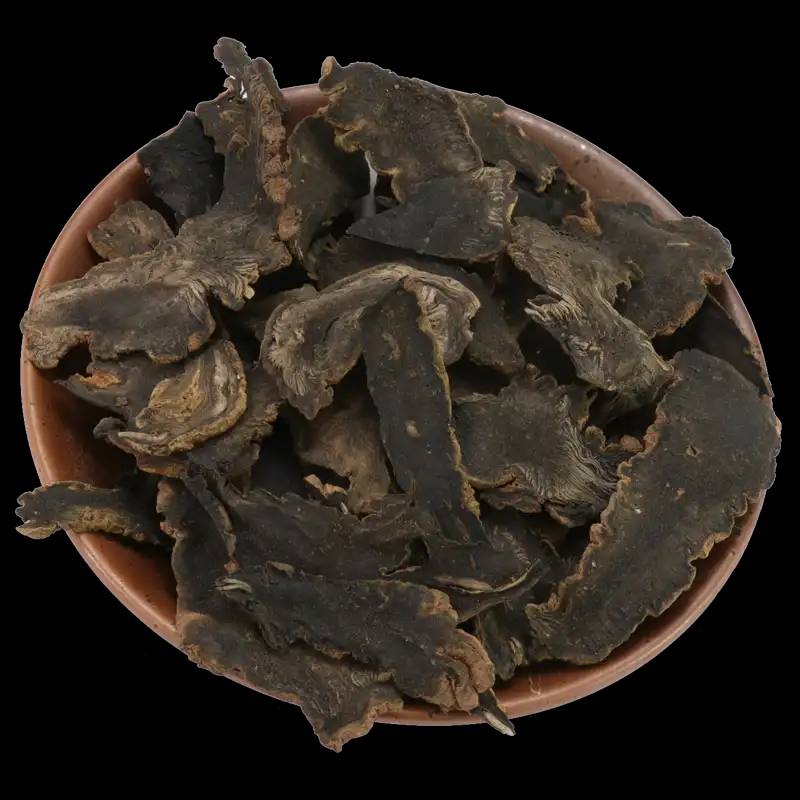
liら[39-40]は、ギンセノシドrg5が胃がんbgc-823細胞の浸潤および遊走を阻害することを発見した。胃がんbgc-823細胞の増殖とアポトーシス、アポトーシス関連因子およびbcl-2関連タンパク質の発現はすべてrg5によって制御されていた。高濃度rg5群ではblank群と比較してbcl-2タンパク質の発現が減少し(p <0.05)、ギンセノシドrg5がbgc-823細胞の増殖を効果的に抑制することが示された。
マイクロ波支援プロセスは抽出物中のギンセノシドの構造変換を効果的に改善し、rg3、rg5、rk1の含有量が著しく増加する。特にrg5とrk1の方が薬効が高い[41]。希少なギンセノシドrg5とrk1の含有量はマイクロ波時間に比例して増加する。マイクロ波放射の60分後の量ginsenosidesr21and Rg5 produced reached a maximum. Treatment with these ginsenosideson five 人間がんcell lines showed that an increase in the amount of Rg5and Rk1 significantly enhanced the 抑制and anti-proliferation of cancer cells.
化学療法薬に対する多剤耐性(mdr)は、臨床がん治療において依然として大きな課題となっています。がん細胞が化学療法剤に対して抵抗性を持つようになると、がん細胞と正常な細胞の両方を殺し、重篤な副作用を引き起こします。今日、がん治療において、腫瘍細胞の化学療法薬に対する抵抗性を低減することが喫緊の課題となっています。fengらは最初に、rg5がドキサルビシン(dox)、パクリタキセル(ptx)、ドセタキセル(txt)、ドセタキセル(txt)、およびドキサルビシン(dox)などの化学療法薬の抗腫瘍効果を、mdr細胞株a2780 / tおよびa549 / tにおいて、感受性細胞の毒性に影響を与えることなく、非細胞毒性濃度で有意に増強することを発見した。rg5はabcb1輸送体を介した薬剤耐性を克服し、化学療法薬の有効性を向上させることから、rg5がmdr治療の良い候補である可能性が示唆されている。
3. 2抗アレルギーおよび抗炎症作用
2015年にahnらは、希少なギンセノシドrg5 / rk1の抗ad効果を検証するために、ヒトの角化細胞およびマクロファージをin vitroで用いて、希少なギンセノシドrg5 / rk1の抗アトピー性皮膚炎(ad)効果を評価した[43]。ケラチノサイトとマクロファージは様々なケモカインとサイトカインを産生し、これらはadの発症機序における重要な調節因子であると考えられている。ケモカインという表が露見し、cytokinesが充実された刺激TNF -α/ IFN -γリポ多糖類(のLPS)。前処理Rg5 / r21減衰NF -κB/ p38 MAPK/ STAT1シグナリング、一酸化窒素lipopolysaccharide-inducedや活性酸素が減ったこと(ロス)生产高マクロファージをである。また、TNF -α/ IFNケモカインlipopolysaccharide-inducedγとともにcytokinesが著しく抑制したという。
Rg5 / r21発見され抑制強くNF -κB / p38 MAPK/STAT1シグナリングとmRNAやみずみずしい素肌の表現のタンパク質マクロファージが示唆しこの化合物の可能性をダメにしanti-AD効果が含まれている。ギンセノシドrg5およびその代謝物の抗アレルギー作用を評価するために、ギンセノシドrg5を経口投与および経口投与し、どちらもige抗原複合体によるマウスの受動的皮膚アナフィラキシー(pca)を阻害するのに有効であることがわかりました。さらに、マウスの耳の炎症にも抗炎症作用が認められた。薬理活性研究では、ギンセノシドrg5の経口投与は、鼻炎や喘息などのige誘発性アレルギー症状を効果的に軽減することが示されている[44]。ギンセノシドrg5は、接触性皮膚炎や乾癬などの炎症性皮膚疾患も改善する[45]。
leeら[46]は、リポ多糖によって刺激されたbv2ミクログリア細胞におけるギンセノシドrg5の抗炎症作用とその分子機構を研究した。その結果、Rg5抑制されるlipopolysaccharide-induced一酸化窒素は生産とTNF -α昇進の分泌がありますまた、Rg5抑制されるmRNA iNOSだとし、TNF -αIL-1β、剤とMMP-9 mRNA表情とは治療に大変効果多種なneuroinflammatory疾患与えるかもしれません。leeら[47]は、ギンセノシドrdを120°cで3時間蒸すことによって希少なサポニンrk1およびrg5を調製し、cecal ligationおよび穿刺による敗血症の治療に用いた。結果は、彼らが体の死亡率と組織損傷を効果的に減らすことができることを示した。その結果、rk1とrg5がhmgb1分泌とhmgb1受容体の発現を阻害することで敗血症を治療できる可能性があることが明らかになった。治療後、病気にかかったマウスの生存率は有意に改善した。このことは、rk1とrg5が敗血症や敗血症性ショックなどの重篤な血管炎症性疾患の治療に使用できることを示している。
3.3神経系への影響
ギンセノシドrg5は、アルツハイマー病の治療に有益なギンセノシドの主要な活性モノマーである#39; s病気[47]。研究によると、rg5はマウスの記憶障害、認知機能障害を有意に阻害し、学習と記憶を改善する。2017年、choiら[49]は、熱ストレスがht22海馬細胞の周期停止を引き起こし、さらにht22細胞の損傷を引き起こし、記憶関連分子を活性化および減少させることを発見した。rg5は神経保護作用を有する天然化合物であり、酸化ストレスや熱ストレスによる認知障害を調節することができる。データによると、スコポラミンは、アルツハイマー病と同様の症状で、健康な若者に記憶障害を引き起こす可能性があります' sです.スコポラミンは、コリン作動性系に作用します,アルツハイマーの機能損失に関連しています&#認知症患者における39の病気、それに損傷を引き起こします。人参サポニンrg5およびrh3は、アセチルコリンエステラーゼ活性を阻害し、神経栄養因子の発現を増加させ、camp応答因子とタンパク質の結合を活性化することによって、記憶障害から保護する可能性がある[50]。マウスのエタノール誘発性記憶障害に対するギンセノシドrg5と他のギンセノシドの効果を調べるために、電気ショックでマウスの記憶を刺激する受動的回避交差法を用いた。その結果、rg5とrk1とその他のギンセノシドは、記憶障害症状の改善に有意な効果を持ち、認知増強効果があることが示された[3]。
うつ病は、うつ病性障害としても知られており、臨床的には低気分や動きの遅さとして現れる。ここ数年、仕事のストレスが高まり、生活速度が速くなるにつれて、うつ病の有病率は年々高まっている。2017年には、rg5が海馬の脳由来神経栄養因子シグナル伝達経路の活性を調節することにより、マウスに抗うつ作用があることが明らかになり、より効果が高く副作用の少ない新しい抗うつ薬の開発が期待されています。
3. 4 t効果
1980年代以降、高麗人参は中国で心血管疾患の治療に使われてきたが、その作用機序は明らかではなかった。最近の研究では、rg5がigf-1rの新しい天然アゴニストとして血管系に作用し、高血圧を改善し、血管新生と血管拡張を促進することが示されています[52]。rg5は血管新生を促進することで複数のシグナル経路を活性化し、血管拡張によって血圧を低下させ、新たな血管や内皮機能を修復する効果があります。rg5は、内皮機能障害(虚血や高血圧など)によって引き起こされる心血管疾患の治療に使用されます。骨芽細胞の分化マーカーにはアルカリホスファターゼ(alp)活性、コラーゲン含有量、カルシウム沈着、石灰化がある。細胞は、さまざまな成長因子や分化因子の刺激を受けた後、発生周期を経て成熟した骨芽細胞に分化する。研究によると、rg5 / rk1は、alp活性、コラーゲン合成、および鉱化小結節の形成を増加させることにより、細胞の成長と分化を促進する。骨芽細胞分化マーカーの著しい増加は、rg5 / rk1がin vitro系において骨芽細胞の成長と分化を促進することを示している。これは、rg5 / rk1の使用が骨の発達を促進し、骨粗しょう症などの骨代謝障害を予防し、新しい治療薬の開発に役立つ可能性を示唆しています[53]。
3.5効果がある点
さらに、ギンセノシドrg5は、糖尿病、肝臓と腎臓の毒性、ホワイトニングに対する効果が研究されている。ponnurajら[54]は、rk1 / rg5化合物の治療によってigf-2r受容体の結合部位が増加し、グルコース吸収が増強され、糖尿病の治療に役割を果たすchop-mediated signaling経路を通じてインスリン感受性と応答が改善されることを発見した。ギンセノシドrg5はまた、シスプラチンによって誘発される腎毒性をマウスで改善することによって、腎臓に対する保護効果を高めることができます(酸化ストレスの減少、炎症およびアポトーシスの抑制など)[10]。これにより、プラチナ化合物のがん治療への臨床応用が広がります。同時に、rg5はアセトアミノフェン(apap)の過剰使用によって引き起こされる急性肝不全に対しても一定の薬理作用を有する[30]。その優れた薬理効果に加えて、ギンセノシドrg5は美容にも良い結果を示しています。2018年、jinら[55]は高麗人参の美白活性を評価した。ヒトの皮膚とゼブラフィッシュの胚を実験材料として用い、サンプルのホワイトニング効果を試験した。その結果、ギンセノシドのrg5 / rk1がmek-erkシグナル伝達経路を活性化することで美白効果を示すことが分かりました。黒参エキスの美白効果を初めて実証した研究だ。
4討論
人参is a natural herb commonly used in China and Korea. It has been used for thousands of years in Asia as a medicine to prevent disease and prolong life. Ginseng saponins are the main active ingredients isolated from ginseng. As a secondary rare ginseng saponin, ginsenoside Rg5 is present in low concentrations in ginseng, making it difficult to prepare. 研究on its pharmacological activity has not been widely conducted. Therefore, more detailed and in-depth 研究on the preparation, isolation, pharmacological analysis, structure-activity relationship and clinical アプリケーションof ginsenoside Rg5 monomers is of great reference value for the research and development of new drugs. Ginsenoside Rg5 has a variety of biological activities and pharmacological effects. With the current emphasis on the production and application of natural medicines, the development and utilization of ginsenoside Rg5 will become another hotspot in the research of traditional Chinese medicine.
参考:
【1】sun g z, liu z, zhang jj。全般的な事情 pharmacological research on Ginsen Panaxadiol Saponins [J]。中国 農業 科学 ^ a b c d e f g h i(2005) 136 -140頁。
【2】hong y j, kim n, lee k,et (パナックス人参)は、タイプを改善します 1 糖尿病 and re-免疫細胞のコンパートメントを格納します[j]。2012年日刊Eth - nopharmacology、144(2):225-233。
【3】張j、王s R、陳 Q C et al.Effectsの ginsenosides Rg3 (R)、Rg3 (s)とrg5 / rk1 エタノール処理マウスの改良について[j]。誌 吉林省の 農業 ^ a b c d e f g h i(2006年)、283-284頁。
[4] kim y j, kwon h c, ko h,et al. ginsenoside rk1の抗腫瘍活性 ヒト肝細胞車で-テロメラーゼ活性の阻害によるシノマ細胞 アポトーシスの誘導[j]。2008年生物&製薬会社- ceutical公報、31(5):826-830。
[5] liu t g, huang y, cui d d,et al のginsenoside Rg3 giogenesisと- an上のgemcitabineと組み合わせる 成長 肺の cancer in ネズミか[J]。 bmc cancer,2009,9(1): 250。
[6] ren s g。専門は、栄養学、物理学 文化財 of micronized 大豆 食事 粉」[D] .Ya'で: 2009年四川農業大学が起こります。
【7】豆d、陳 y, ren j,et al. ocotillone-タイプgin—senoside from 葉 of 三 人参[J]。J あご 2002年Pharmacol Sci局番号は119 -121。
[8]金 S 私は公園、 J h, ryu j h,et al. ginsenoside rg5 korean redの真のダムマラン配糖体 人参[J]。文書 of Pharmacal 研究 ^ a b c d e f g h i『人事興信録』第19版、551-553頁。
[9] lee s m, shon HJ、崔C Set al.Ginsenosides 加熱処理された高麗人参[j]から。化学 Pharm ^ a b c d e f g h i(2009年)57 -94頁。
[10] li w, yan m h, liu y,et al. ginsenoside rg5 アメル- iorates Cisplatin-Induced nephrotoxicity in ネズミ を通じて inhibition of 酸化炎症 [j]. nutrition,2016,8(9): 566-583 .[11] liang 「L」「道(タオ H E、TINGWE私D U, et al.Ginsen - oside-Rg5 アポトーシスとdnaを誘導する 胡- man子宮頸がん細胞の損傷[j]。分子医学_ひぐらしのなく顷ポート、岸谷:ちっちゃな泡が11(2):940-946。
[12] kim t w, joh e h, kim b,et al. ginsenoside rg5 a-マウスの肺の炎症を緩和する マクロファージ上のtoll様受容体4へのlpsの結合 [J]。国際 2012年Immunopharmacology、12 背番号は110 -116。
[13]金光珍の八尾H Y r, yang j,et al.希少元素の変換規則 ginsenosides から 主要 閉じ込めマイクロ波促進分解法によるギンセノシド[j]。中国の大学の化学ジャーナル,2014,35(11):2317-2323。
[14]姑 C Z LV J J、張 X X, et al.Triterpenoids広報を目的としている pc12細胞の分化に影響を与える from the 蒸し roots of panax 三七[J]。誌 of 自然 2015年製品、78 文政8年(1829年)-天保10年(1840年)。
[15] miao x s, metcalfe c d, hao c,et al イオン化 mass 離イオン化法 of ginsenosides [J]。誌 of 大量 2002年離イオン化法、37 (5) 495-506。
[16]申j h、朴y j、キム w,et al.ジンの変化- senoside プロファイル in processed 人参s by 乾燥、蒸し、 鴉片を吸って[J]。誌 of 微生物学 日本生物工学会誌,2019,29(2),222-229。
[17]金 S N HA Y W新 H et al.Simultaneous量子化 of 14 ginsenosides in Panax 人参C.A.Meyer (朝鮮 赤い 人参) by HPLC-ELSDとその application to 品質 制御か[J]。日刊製薬 and 生物医学 ^ a b c d e f g h i(2007年)、164 -170頁。
[18]「権魯甲 S W漢 S B、朴 私はH et al.Liquid chromatographic 判定 of 少ない 極地 ギンセン-加工されたオサイド 人参[J]。誌 of ^ a b c d e f g h i『官報』第921号、大正13年、339頁。
[19]金 W Y、金 J m, han s b,et al.Steamingの 高温の高麗人参は生物活性を高める- ty[j]。誌 of 2000年自然製品63 (12) 1702 -1704。
[20]ジョー S K、金 私 S、尹K Sなど al.Preparation ginsenosidesの Rg3、r21、 Rg5 -selectively 高麗人参を濃縮して a 単純な steaming プロセスか[J]。欧州食品 Research and 2015年技術、240 約数の和は251-256。
[21] lee j h, shen g n, kim e k,et al.黒人参の調製とその抗腫瘍活性[j]。^ a b c d e f g h i j j orient phy siol pathol,2006,20:951-956。
[22] kang k s, yamabe n, kim H Yet al.Effectの ラットにおけるリポ多糖誘導肝障害に対するサンニンジンのメタノール抽出物[j]。^「phytomedicine,2007,14(12): 840-845」。phytomedicine(2007年). 2008年3月14日閲覧。
[23]康 K S、金 H Y山辺 N et ヒドロキシルラジカル(hydroxyl radical)は、ヒドロキシルラジカルの一種 熱加工によって生成された4つのギンセノシドのうち[j]。 専門は有機化学・生物化学 通、2006年は16 局番号は5028-5031。
[24] an y e, ahn s c, yang d c,et al. chemical con- version of ginsenosides in 膨らませる red 人参[J]。 LWT-Food 科学 and 2011年技術、44 (2) 370-374。
[25] kim j h, ahn s c, choi s w,et al。韓国 ^ a b c d e f g h i(2008)、188 -193頁。
[26] lee j h, shen g n, kim e k,et al.黒人参の調製とその抗腫瘍活性[j]。^ a b c d e f g h i j j orient phy siol pathol,2006,20:951-956。
[27] huang d, li y, zhang m,et al. tartaric acid in- duced 変換 of protopanaxadiol to ginsenosides Rg3 とRg5 その場で回収するのです 集積 拡大ベッド吸着クロマトグラフィー[j]。誌
2016,39(15): 2995-3001。
[28]郭 D D、成 L Q、李 L et al.Preparation of ginsenoside Rg5 with ginseng 繊維質 root 粉か[J]。科学 and 技術 of 穀類 油 ^ a b c d e f g h i(2017) 70-76頁。
[29]郭d d、鄭l q, li l,et al.最適化 ギンセノシドrg5のマイクロ波による抽出 from 高麗人参の繊維状の根の粉の反応の表面のメス- odology [j]。科学技術 ^ a b c d e f g h i「try,2017(11)」(英語). try(2017) . 2017年9月29日閲覧。
[30] wang z, hu j, yan m,et al.カスパーゼを介した主要な希少ジンであるginsenoside rg5の抗アポトーシス作用,on acetaminophen-induced hepatotoxicity in ネズミか[J]。農業・食品化学誌,2017,65(42):9226-9236。
[31]関D P、王 H、李 Wet al.Optimization of 技術準備 of ginsenoside Rk1 とRg5 by 高温熱分解し[J]。上海 誌 of 汉方 ^ a b c d e f g h i(2015年)91-95頁。
[32]孫 C P高 W P、趙 B Z et al.On conver -紫苑 protopanaxadiol type saponins to ginsenoside Rg5 レモンか[J]。中国 伝統的な特許 ^ a b c d e f g h i i g h i(2013年).「what ' s in ?
[33] liu h y, wang c x, yang y,et al. optimization ginenosideの生産の Rg5 by マイクロ波-assis-全体の活性分解法 saponinsから 茎 パナックスの葉があります 三七[J]。ロバタビストロだTradi - tional and ハーブ 」(2018年). 2018年4月14日閲覧。 3245-3251。
[34] kim s j, kim a k。[オピニオン]黒参の抗乳がん活性化 人参( ginseng マイヤー) そしてginsen- oside rg5 [j]。J Ginseng 2015年の「Res publica、39 背番号は125 - 134.
[35]梁 「L」「道(タオ H E、TINGWEI D U, et al.Ginsen - oside-Rg5 アポトーシスとdnaを誘導する 胡- man子宮頸がん細胞の損傷[j]。分子医学_ひぐらしのなく顷ポート、岸谷:ちっちゃな泡が11(2):940-946。
[36] zhang d m, wang a f, feng j p,et al. ginsen - oside Rg5 を アポトーシスを in 人間 食道 癌細胞はホスホイノシチドを介して?3 キナーゼ/ タンパク質 キナーゼ B シグナリング か[J]経路があり分子 ^『官報』第4019号、大正19年4月19日。
[37] zhang d m, zhang q, liu l l,et al. ginsenoside Rg5 食道癌eca-109のアポトーシスを促進する ことによって、セル down-regulating Bcl-2 タンパク質か[J]。中国 journal of laboratory diagnosis, 2018,22(4):700-703。
[38]美Z 丁長官はまた、H Y M、李 F et al.Effect of ginsen - oside Rg5 [j]ヒト食道がん細胞について。2016年地-内申点の日刊研究所診断(12):1982年-1985がある。
[39] li w, liu w, zou j j。ギンセノシドrg5の効果 on 侵攻 and 移住 of 胃 cancer BGC-823 mir-125b / stard13 / neu1を介した細胞 シグナリング パス-か[J]。中国の伝統的な実験のジャーナル 2018年医療公式、24日(22):138 -142しました。
[40] li w, liu w, zou j j。ギンセノシドrg5の効果 apopの増殖、アポトーシスおよび関連因子- bgc-823 cellin胃がんのトーシス[j]。紀要 ^『仙台市史』通史編(通史編)、通史編(通史編)、2018年(平成30年)、95 -95頁。
[41]崔熙燮、朴j y、金炳賢 t,et al.改良されたantican cer effect of ginseng extract by microwave-assisted 処理 を通じて the 世代のginsenosides Rg3、Rg5 r21 [J]。誌 of 機能 2015食品と14:613-622下位です。
[42]峰 S L,羅 H B、蔡妍 L 一、たち al.Ginsenoside Rg5 克服chemotherapeutic開始 抵抗媒介 ABCB1 転送: 体外 and in volume vivoか[J]勉強します。^『仙台市史』通史編4(通史編2)247-257頁。
[43]安S、SIDDIQI M H、ACEITUNO V C et al.Ginsenoside Rg5: r21 減衰 TNF -α/ IFN -γ-induced 胸腺と活性化調節された化学物質の生産- kine (tarc / ccl17) and LPS-inducedない 生産ownregulation経由 NF -κB / p38 MAPK / STAT1シグナリング in human みずみずしい素肌 and マクロ——phages [J]。で 体外 セルラー&発達 ^ biolo - gy-animal,2016,52(3): 287-295。
[44] shin y w, bae e a, han m j,et al.主要成分であるギンセノシドrg5の代謝 red 高麗人参,腸内細菌叢とその抗アレルギー作用[j]。紀要 微生物学 and 2006年(平成18年)11月16日:1号機が完成。
[45] shin y w, bae e a, kim D Hにする。抑止効果の ginsenoside Rg5 その代謝物ギンセノシドrh3です in オキサゾロン誘導マウス慢性皮膚炎モデル[j]。2006年文書Pharmacal研究(ソウル)、29(8):685-690。
[46] lee y y, park j s, jung j s,et al Rg5 リポ多糖類-刺激 BV2 microglial 細胞か[J]。国際 紀要 分子 学術誌,2013,14 (5):9820 - 9833.
[47] lee w, cho s h, kim j e,et al of ginsenoside Rh1 on HMGB1-mediated 敗血症 _ひぐらしのなく顷sponses [J]。the american journal of chinese medi—cine,2019,47(1): 1 -15。
[48] jin l, jin x s。紅参サポニンrg5の保護作用 MPP + 酸化ストレスによる損傷を引き起こす sh-sy5y細胞では[j]。lishizhen medicine and materia medica research,2015 (4): 878 - 880.
[49]崔代表S Y、金 K J、宋 J H et al.Ginsenoside Rg5 防ぐ アポトーシスを by 変調 ヘム-酸素- ase-1 / nrf2シグナル伝達と認知の発現を変化させる impairment-associated 遺伝子 in 熱 stress-exposed HT22細胞か[J]。^『仙台市史』通史編2(通史編2)、225-228頁。
[50]金 E Jチョ・チュルハン I H、バン 楽 T K et al.Ginsen - osides Rg5 とRh3 マウスにおけるスコポラミン誘発mem- ory欠損を保護する[j]。^ the journal of ethnopharmacolo—gy,2013,146(1): 294-299。
[51] xu d, wang c, zhao w,et al ギンセノシドrg5の効果 マウスで:hippoの関与-キャンパスbdnf シグナリング か[J]経路があり神経科学 手纸、645年:97 -105、2017年た。
[52] cho y l, hur s m, kim j y,et al インスリン様成長 成長 Factor-1 受容体 by 銀- senoside Rg5 促進 血管新生 and vasorelax -自宅[J]。誌 of 生物 化学、2015 290 約数の和は467-477。
[53] SIDDIQI M h, siddiqi m z, ahn s,et al. ginsenosides rg5のstimula tive effect: rk1 murine日osteo - blastic M C3T3-E1 細胞か[J]。Phytotherapy 研究,2014,28(10):1447 -1455。
[54] ponnuraj s p, siraj f, kang s,et al + Rg5 複雑な下 endoplasmicレチクル ストレス 条件か[J]。薬理学研究,2014,6(4):292-296。
[55] jin y, kim j h, hong h d,et al. ginsenosides rg5 and rk1, skin-whitening 黒人参[j]のエージェント。^『週刊ファミ通』2018年4月号、45 - 67頁。


 英語
英語 フランス
フランス スペイン
スペイン ロシア
ロシア 韓国
韓国 日本
日本